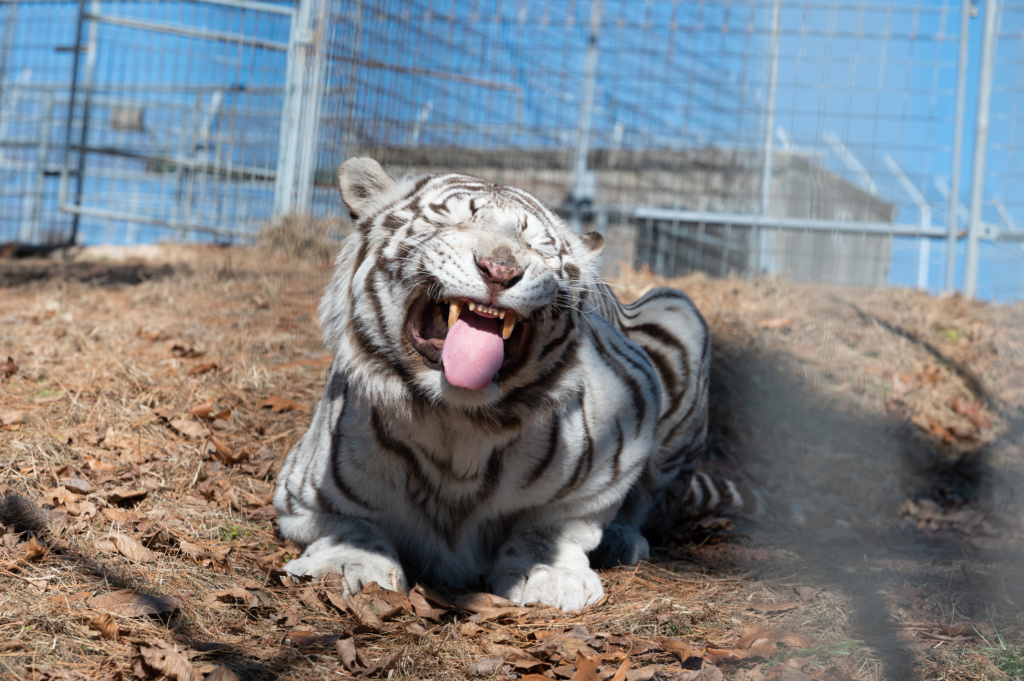
Have you ever seen a big cat, like a lion or tiger, curl back its lips and make a funny face that almost resembles snarling? That odd expression isn’t aggression—it’s called the Flehmen response, and it’s a way for these powerful predators to get a better “whiff” of the scents around them. But to understand what’s going on, we need to dive into something called the Jacobson’s organ.
The Jacobson’s organ is a special sense organ located on the roof of a big cat’s mouth, just behind the front teeth. It’s part of the cat’s chemosensory system, which means it helps the cat detect chemicals in the air—like smells. But unlike a regular nose, the Jacobson’s organ picks up more than just everyday scents; it’s especially good at detecting pheromones, which are special chemical signals animals use to communicate with each other.
Pheromones can tell a cat a lot of information, like whether another animal is nearby, if that animal is a threat, or even if a potential mate is around. The Jacobson’s organ acts like a super-sense, giving the cat extra information beyond what it can detect with its regular nose.
Now, how do big cats get these pheromones to the Jacobson’s organ? That’s where the Flehmen response comes in. When a tiger, lion, or other big cat smells something particularly interesting—like the scent of another animal—it might stop, curl back its lips, and open its mouth. This “grimace” look happens as the cat traps the scent inside its mouth and pushes it toward Jacobson’s organ. By doing this, the cat gets a more detailed “reading” of the smell, figuring out if it’s from another big cat, prey, or something else in its environment. The Flehmen response is like opening a second set of sensory doors, allowing the animal to process important information that would be missed by the nose alone.
For big cats, the Flehmen response and Jacobson’s organ are incredibly useful tools. They help cats communicate with each other and stay safe in the wild. For example, when a male lion catches the scent of another lion nearby, the Flehmen response helps him determine if it’s a friend, a rival, or a potential mate. It can even help detect if the other lion is sick or stressed. Tigers, who live more solitary lives, use the Jacobson’s organ to sniff out other tigers or prey in their territory. This heightened sense helps them track animals from a distance or figure out if another tiger has recently passed through their area.
Humans actually have a Jacobson’s organ too, but it doesn’t work the same way it does in big cats. In humans, it’s tiny and isn’t functional like it is in animals. Big cats rely on this organ to help them survive, especially since communication and scent marking are huge parts of their daily lives.
